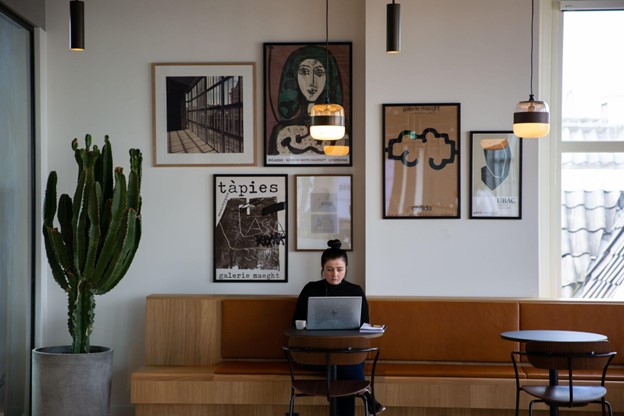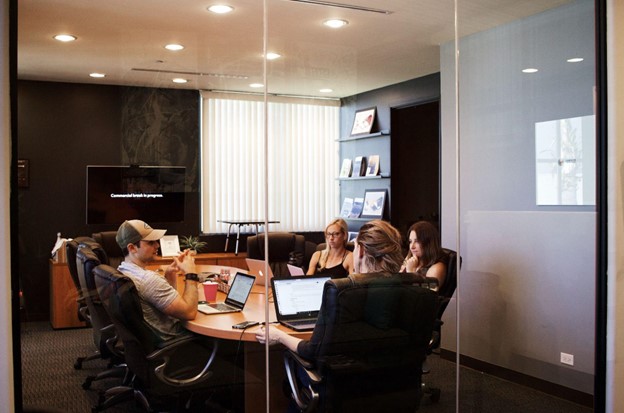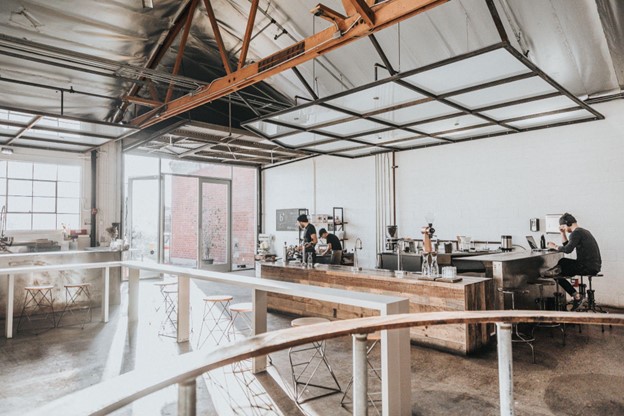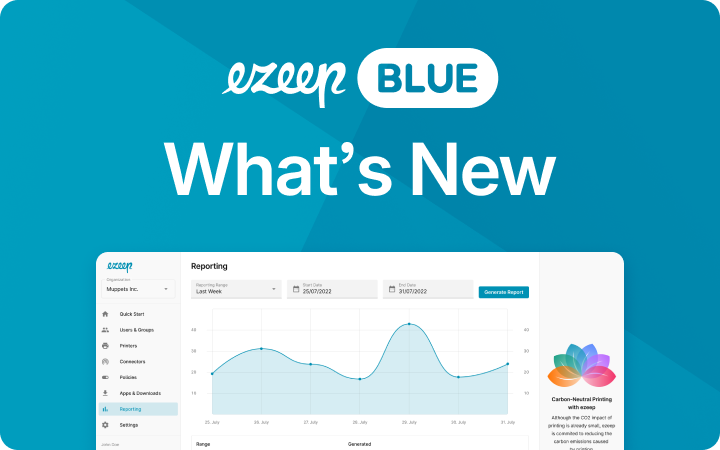How to Find the Right Mix of Products for Your Coworking Space

Finding the right balance with what you offer in your coworking space is the key to creating a sustainable business model and ensuring long-term success.
However, with so many different products to choose from, like hot desks, meeting rooms, and phone booths to name a few, it can be hard to know just where to start.
In this article, we’ll explore the main products offered in a coworking space, how to price your resources with profitability in mind, and how technology can support you in successfully managing your product mix.
What products are available in a coworking space?

There are many products available in coworking spaces, from hot desks to meeting rooms to amenities and more. As coworking evolves, so do the products that are offered.
Here is a breakdown of some of the most popular resources you’ll see in a coworking space.
1. Desks (hot desks and dedicated desks)
There are two popular kinds of desks offered at a coworking space: hot desks and dedicated desks.
A hot desk is a desk in an open area that can be booked on-demand. They encourage drop-ins and casual members to come check out the space, serving as a powerful acquisition tool.
A dedicated desk is a desk or area that is rented out to a specific person on a specific schedule, whether that’s every weekday or three days a week. They promote long-term membership plans and are a source of predictable revenue for you each month.
Desks are considered to be the original coworking product offering. Most spaces still offer one or both of the options listed above. However, hot desks are becoming less and less popular, as we’ll discuss in more detail later on.
2. Private Offices
Private offices are enclosed workspaces that are rented out to an individual or a group of people, typically on a monthly basis. They are appealing for solopreneurs or small teams looking to get their business off the ground.
Private offices can be offered as single or team offices depending on the size of the office. With both options, the tenants typically act as the owner of that office, with their own key and 24/7 access as needed.
Though they are not usually considered drivers of community (although they certainly can be), private offices are an important component of predictable revenue.
Since the pandemic, many operators have seen a spike in private office sales, as remote workers turn towards coworking spaces as their preferred place of work. With this has come more need for private spaces, driving the popularity of hot desking down and the popularity of hot desks up.
3. Meeting Rooms and Event Spaces
Meeting rooms, conference rooms, and board rooms are larger gathering spaces meant to hold anywhere from 5 to 20 people at a time. They typically come with a table and chairs and other amenities such as a television or conference room technology.
Having at least one or two larger areas for people to meet and gather is a good idea to give members more options. You may also choose to double your meeting rooms as event spaces, as we see so many operators do.
This is a great way to drive additional revenue and maximize space utilization. For example, a member could rent out a meeting room for a workshop or a local business could rent out your open area after hours.
4. Phone Booths
Phone booths are small spaces dedicated to supporting members who need to be on calls at any time of the day. Phone booths have exploded in popularity since the pandemic, also due to the rise of remote workers.
If your space is meant to serve remote workers, you’ll want to consider equipping your space with additional opportunities for uninterrupted remote collaboration, such as with phone booths.
Additional Amenities or Resources
Aside from space-based products, many coworking spaces also rely on additional resources, amenities, and value-add services to generate revenue. This could include:
- Fitness classes
- Art studio access
- Onsite printer access
- Massage therapy onsite
- Speciality rooms like fitness rooms, photo studios, or warehousing space
The list of resources goes on and on. What you offer will ultimately depend on your business model and the demographic you’re looking to serve.
How to determine what products to offer in your space

With so many potential products to choose from, the next step is figuring out exactly what you should offer in your space.
It’s important to note that there is no one-size-fits-all product ratio or product mix that will catapult you into success.
Rather, it’s about experimenting given your unique needs until you find the right mix. Here are some factors you should consider that can heavily influence what you offer your members.
Your target market. Consider who you serve and what products would work best for them. Remote workers may want more single private offices and phone booths, while enterprise clients may prefer conference rooms and team private offices.
Your location. Where your coworking space is located will heavily impact who your space attracts and therefore, your product mix. Those located in more rural areas may do better with private offices while those in tourist destinations or larger cities are more likely to see hot desks in use.
Your business model. Relying solely on a single on-demand resource type, especially hot desks, often does not provide enough predictable revenue to be profitable. Consider how your space will make money and develop your product mix around your growth goals.
Emerging trends. Understanding what the market wants out of a coworking space and how this changes over time can help shape what you offer. Consider matching your space with the market needs right now and in the future.
The best way to get to the right mix of coworking products is by experimenting until you find the right fit. With that in mind, build your space in a way that is modular and can be easily moved around if needed. This will give you the greatest flexibility long term.
Pricing your coworking products

Pricing your products is a challenge for many coworking operators starting a coworking space. We often get asked from new clients how to figure out the right pricing structure or pricing model for what you offer.
There are many different pricing strategies available to you as a coworking owner or operator. Below is an outline of three different pricing strategies, based off information from HubSpot, that could be relevant to you as a coworking operator.
Cost-plus pricing
The most common pricing strategy, cost-plus pricing relies on figuring out the cost of an item to break even and adding a fixed percentage to that.
For example, if selling your coworking product offerings at $5,000 a month total would break even and you want 50% margins, you would add 50% to the cost to get the price of your offerings.
Figuring this out for coworking spaces can be challenging, as you also need to account for occupancy rates of various products. However, it can be a good place to start.
Competitive pricing
This strategy involves looking at the cost of items of other coworking spaces in your area and basing your price off of that – either higher, lower, or the same.
Pricing it higher can signal a premium product, while pricing it lower could undercut your competition and bring in more members. Pricing it the same means your offering is on par with market prices and eliminates price as a variable on which to compete on.
Whether you opt for competitive pricing or not, it’s always a good idea to have an understanding of how other spaces in your market are pricing their offerings.
Value-based pricing
With this strategy, you are pricing your products based on the perceived value they provide your customer. This is considered to be one of the best ways to price, though it is not always possible depending on your market and offerings.
Much like with what you offer, how you price your products is an experiment that will evolve as the needs of your space evolves.
Managing the products for your coworking space with the help of technology

Operating an efficient coworking space comes down to using technology to properly manage all of the resources your space has to offer.
With the right coworking technology in place, you’ll be able to streamline your operations, optimize your decision making processes, grow your business, and elevate your community.
There are a number of tools available to coworking owners and operators. Some of the essentials include:
Coworking management software like Optix can help members book resources, pay their invoices for the products they reserve, and check-in to the space, all from their mobile device.
Print management software like ezeep can help you manage physical printers to streamline the printing experience
Access control systems like Kisi can help you automate access to your space, so members can access the resources they need on-demand.
By leveraging technology in your space, you can manage your products more efficiently, while providing a better experience for your members.
Start working on the perfect product mix today
Finding the perfect mix of products for your coworking space is a challenging yet essential task for new owners.
Take a look at all of the products you can offer and create a mix that works best for your members. Then experiment with it until you get to the right assortment of products that ensures profitability and happy members.
If you’re interested in learning more about how to use technology to manage your coworking operations, check out this guide to crafting the perfect coworking tech stack.
Author: Kelly Karn
Kelly is the Content Manager at Optix, a coworking management software that empowers today’s leading coworking operators to succeed. She is passionate about coworking, the future of work, and how to create workplaces that bring out the best in people.

